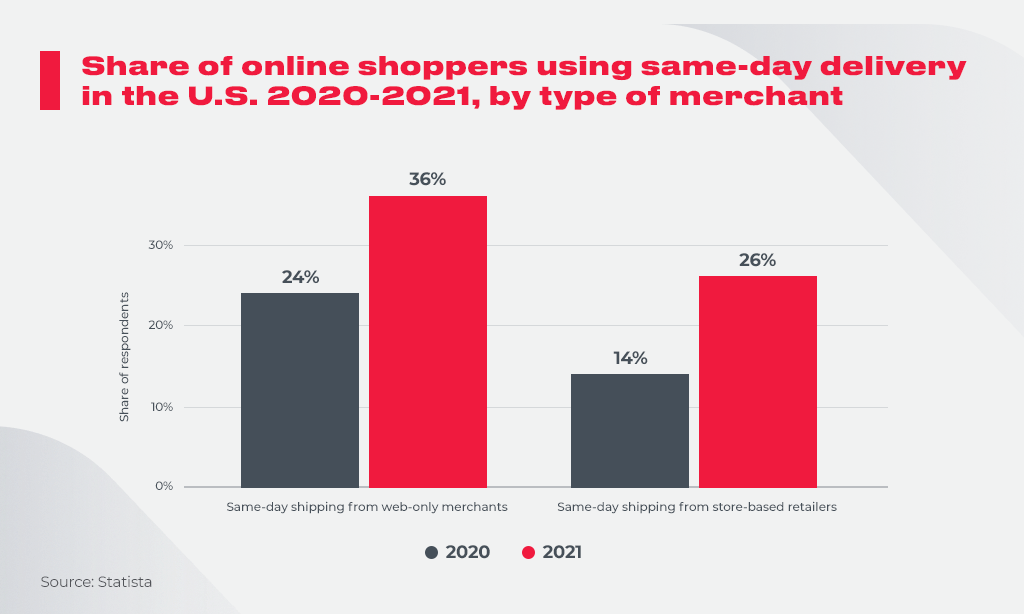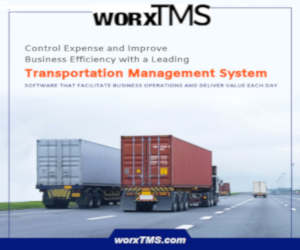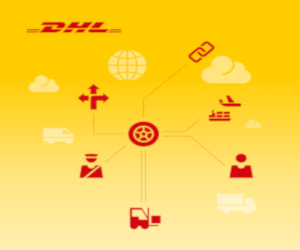In both 2020 and 2021, Statista conducted online surveys asking approximately 1,000 people across the United State the following question: Which of the following activities were part of your shopping behavior over the past six months? The answer: “same-day shipping” topped the list. Check the percentage below:

Given the new global challenges imposed by COVID-Delta, more people in 2021 turned to same-day delivery, whether at online or offline stores. It has become the norm to receive packages in 1-2 days, but any slower is now perceived as poor service.
How do retailers manage to ship everything so fast without any damage to packages? What helps Amazon ship the average order in 1-2 hours with its Prime Now service? How does Dolly deliver bulky items in one day?
The shift from traditional transportation and logistics processes to digitalization has substantially impacted the way companies deliver. A Transportation Management System (TMS) is a solution that increases control over deliveries and helps companies ship quickly and securely; making consumers happy.
In this blog, we will discuss the following topics:
- How the transportation sector has evolved over the past year
- What is a Transportation Management System (TMS) and what’s its place in today’s shipping evolution
- The benefits of implementing a TMS
- The latest TMS features
- Cases to support the above
CHANGES THAT HAVE TAKEN PLACE IN THE TRANSPORTATION SECTOR OVER THE LAST FEW YEARS
Transportation is a part of every country’s economy. Shipping companies and global trade contribute to their national budgets. For example, in 2020 the contribution of truck transportation alone to the U.S. budget amounted to almost $1 Trillion and 12 Billion tons of freight. This is one of the reasons shipping companies are embracing the evolution of transportation technology and its inherent benefits. Let’s see how it’s evolving and what’s changing.
Implementation Of Innovative Technologies
The goal of most transportation companies is to provide fast, flexible, and secure services that increase the level of consumer satisfaction. Keeping pace with technological innovations is one of the methods for achieving this goal. In recent years, the transportation sector has seen a lot of changes, and here are some of the most significant.
CLOUD ADOPTION
Cloud computing boosts digitalization of the transportation processes and promotes:
- Faster and more agile delivery services
- Improved visibility over transportation
- More effective collaboration between shippers, carriers, brokers, and end-customers
Let’s take a look at a now famous case study. Pfizer, a globally recognized pharmaceutical and biotechnology corporation, needed to increase their throughput for deliveries and become more responsive to unexpected events. Moving 500 suppliers to a cloud-based digital network helped Pfizer to scale more quickly, increase network visibility, and better prepare for “planned” emergencies.
They say cloud adoption enabled them to “land products into portions of the world where before we and the rest of the industry were flying blind.”
ELD/GPS TRACKING
Cutting insurance and fuel costs while providing quality services to customers is critical in transportation. Tracking solutions empowered by ELD/GPS devices help to:
- Manage fleets more effectively
- Optimize shipping assets and resources
- Build the most convenient and fastest routes
- Ensure driver safety
- Minimize theft risks (anti-theft GPS)
![]()
DELIVERY BY DRONES
Amazon delivered their first packages by drone in the UK in 2016 under its Prime Air program, offering 30-min delivery. This was the first drone delivery in the world and the impetus for other companies to progress and expand their delivery methods.
As of 2021, the world has seen subsequent drone deliveries:
- COVID vaccines: Zipline, a drone manufacturer, delivered vaccines to Rwanda, Ghana, and India (11,000 doses).
- Organ transportation: Workhorse Group and Airspace Link demonstrated delivery of 3D-printed kidneys (10-minute, 2.8-mile).
- Meal delivery: El Pollo Loco, a quick-service restaurant chain, has started testing chicken and rice delivery by drones.
Drone deliveries are fast! For example, Manna, a drone delivery company performs up to 3,000 daily flights. Their suitcase-sized drones can deliver orders within an average of 3 minutes. Which human courier could do that?
Integration Of A Transportation Management System (TMS)
The dynamics of the industry push carriers and shippers to automate processes and make transportation fast, smooth, and more visible. The integration of a TMS helps achieve this—whether it’s your internal solution or you are using 3PL providers.
What is a transportation management system? It is a part of your supply chain in the context of transportation operations. TMS software arranges, executes, and tracks shipments, performing several functions:
- Moving freight by all modes (by ocean vessel, train, truck, or plane—in bulk, palletized, or parcels)
- Search for both internal shipping assets and external service providers to deliver goods
- Arranging inbound and outbound shipments both domestically and internationally
Organizations use TMS software to arrange freight movements quickly and efficiently. These logistics solutions manage commodity sourcing, transport planning, and transaction settlements. Using these types of specialized software contributes to a company’s visibility across all transport modes.
The TMS of the “now and future” is considerably different from the old legacy systems. A new generation of systems provide the following:
- Services are provided through the cloud and subscription-based providers (SaaS). Cloud and SaaS solutions make transportation management systems more user-friendly, cost-effective, and affordable for small and medium companies. Hence, in 2019, G2 reported a 15% growth in TMS usage by SMB.
- Freight is visible wherever it is on the land, ocean, or in the air. Most B2B applications have a tracking feature.
- Uber-like options allow shippers, drivers, and carriers to provide deliveries with the best rates on the market. This new open market helps drivers and carriers handle freight easily (spot-market purchases, immediate delivery of goods, last-mile shipments, and moving commodities from transportation hubs to the end-user delivery).
- Immediate ROI starts from day-1 of TMS installation. Thanks to the expanded integration capabilities of modern applications, the software is more flexible and adaptive to business workflows (containing manual data, web services, ERP, and APIs). So companies invest in the software platform, can implement it quickly (a.k.a. “Nail it & Scale it”), and has vast possibilities to tune it to their business needs.
GEFCO, the European leader in automotive logistics, states that by using a TMS, enterprises are building a “supply chain control tower to obtain real-time visibility from end to end.”
TRANSPORTATION MANAGEMENT SYSTEM FEATURES
Modern TMS features are a part of the supply chain management process. DHL reports that this technology is available in the planning and delivery process, even for small and midsize companies with annual freight costs of ~$15 Million.
Organizations can integrate a TMS system into either an ERP or WMS for single or multimodal shipments and can obtain pooled-destination capabilities. However, there are other “must-have” features (either in the cloud or private server) including:
- Carrier contacts management
- Load planning to understand the best way to load trucks – in bulk, parcels, stacks, or packages
- Route optimization, carrier selection, and analytics for freight management
- Real-time tracking (e.g., Abivin Route with carrier information and GPS updates)
- Contract management capabilities (modern systems contain customizable feature descriptions, such as location, zone, and effective date)
- Integration with ERP, WMS, or OMS software platforms
- Reporting and business intelligence options (logistics KPI data for tracking trends)
- Security: essential statistics must be available for authorized users including system access
In addition to these basic features, businesses need international logistics functions such as a multi-language interface, the capability to manage commercial invoices, SEDs (shipper’s export destination), NAFTA paperwork, VAT, and cross-border taxes calculations. These automated features can make it much easier to manage international trade delivery operations.
Logistics software solutions are not as complicated as they may seem. It can be an “add-on or plug-in” application ready to be integrated into your website, even if you have no particular expertise in running it. Once you choose the basic features, they can ease the delivery process, save money, balance supply and demand, and optimize operational workflow.
TRANSPORTATION MANAGEMENT SYSTEM BENEFITS
A TMS provides savings by reducing freight delivery costs, improving operational processes, preventing time and money losses with proper analytics, and increasing customer satisfaction thanks to high-quality service levels.
Before uncovering the benefits, take a look at the following statistics:
- After TMS integration, 30% of companies identify an increase in customer satisfaction (AP News Logility Report).
- About 36% of the respondents admit to a more balanced supply and demand model via predictive warehouse analytics (SupplyChain 24/7).
- Participants saw a time reduction in freight invoice payments (Cerasis).
We can explain these figures by the value that an integrated transportation management system brings to your business by enabling:
- Comparing and choosing the best prices of carriers in the market
- Automated shipments booking
- Tracking your deliveries and enhancing supply chain visibility
- Improving freight shipment efficiency
- Operational cost reductions
- Warehouse efficiency after the software is integrated into your ERP (save time on inventory records and commodity entries)
- Gaining customer satisfaction by using real-time analytics that allows you to track on-time delivery and choose only those providers with 100% accuracy for your next deliveries
- Improving cash flow by combining different routes and types of vehicles, choosing shared containers for shipping, or the best last-mile deals
Companies can substantially decrease their manual work by gaining all these benefits. As a result, there are fewer errors in operations such as incorrect billing and invoicing.
Pooled distribution is another valuable possibility enabled by system integration. It allows you to choose the shipments to be picked up or delivered, and at the same time, split the complex orders and process them separately.
The concept of “repeat business” becomes a reality once automated delivery processes contribute to improved customer satisfaction.



